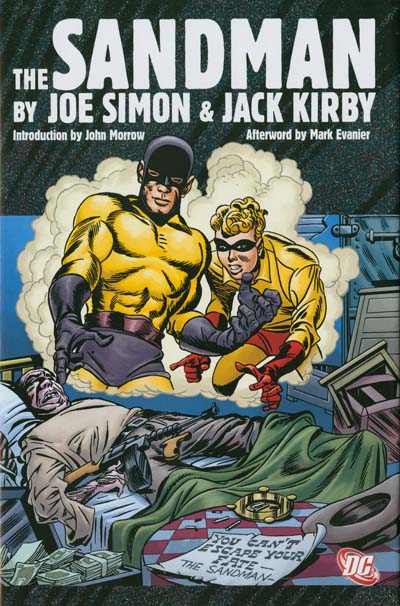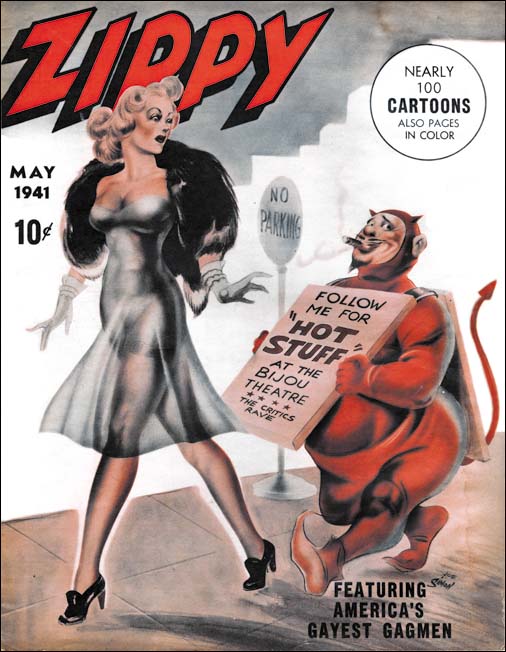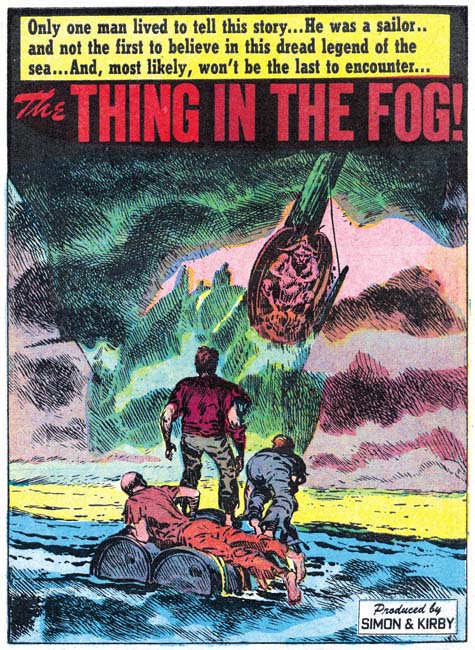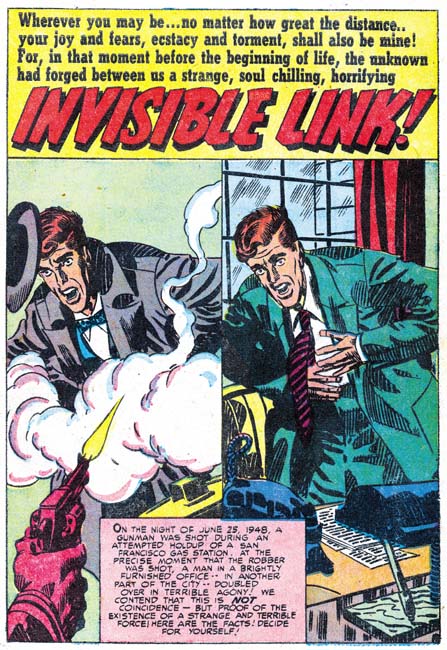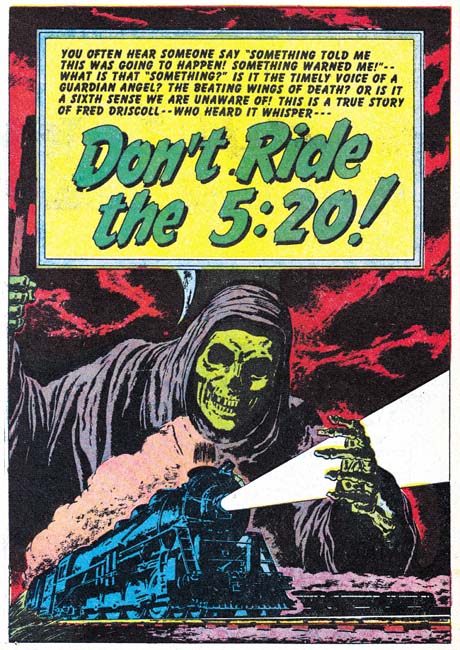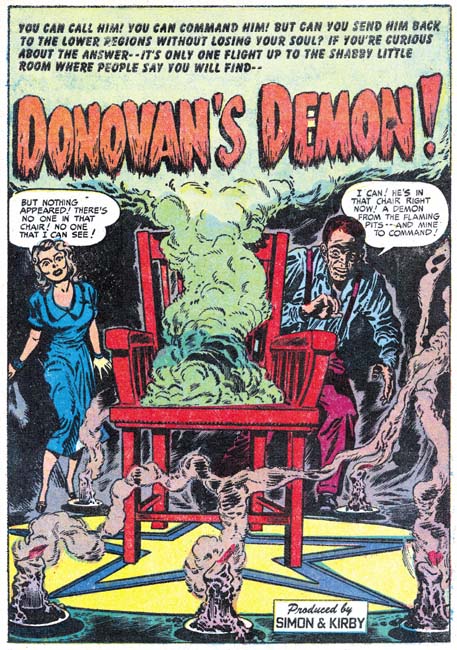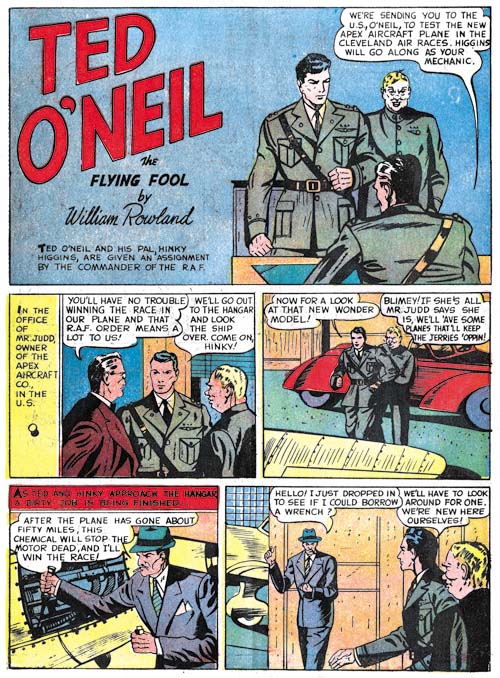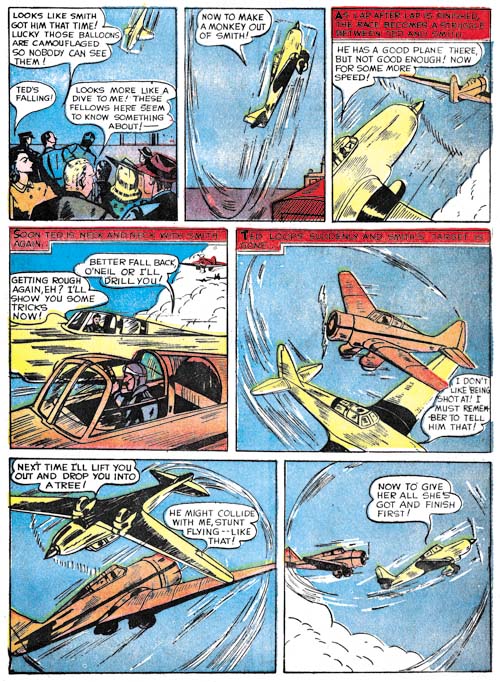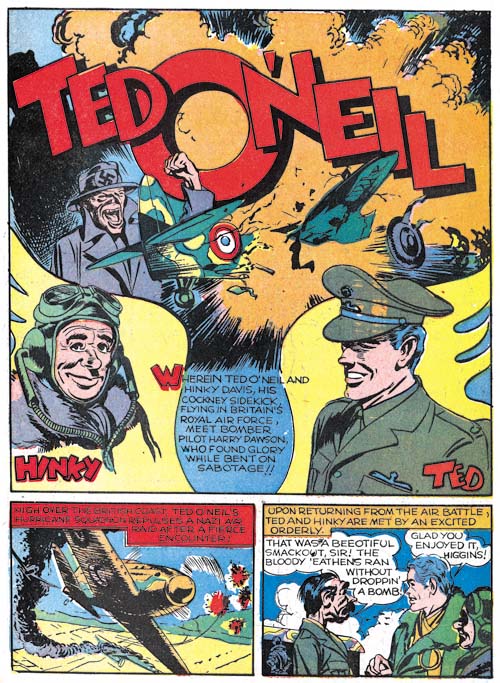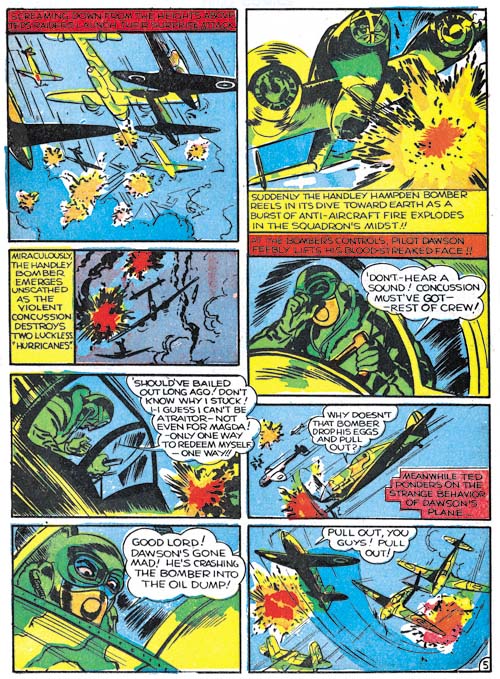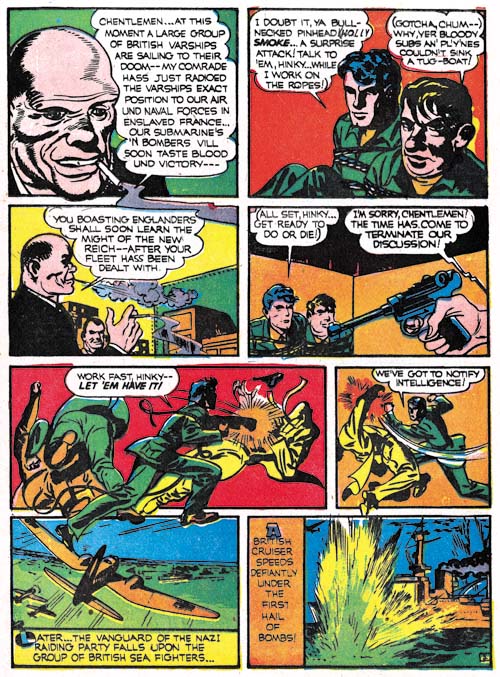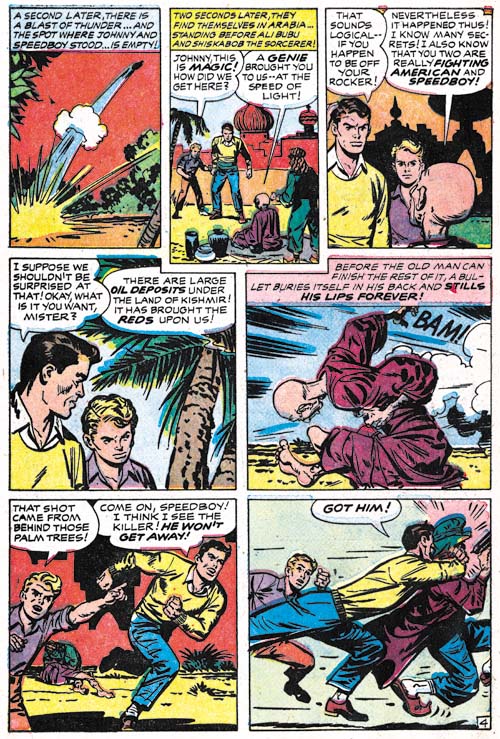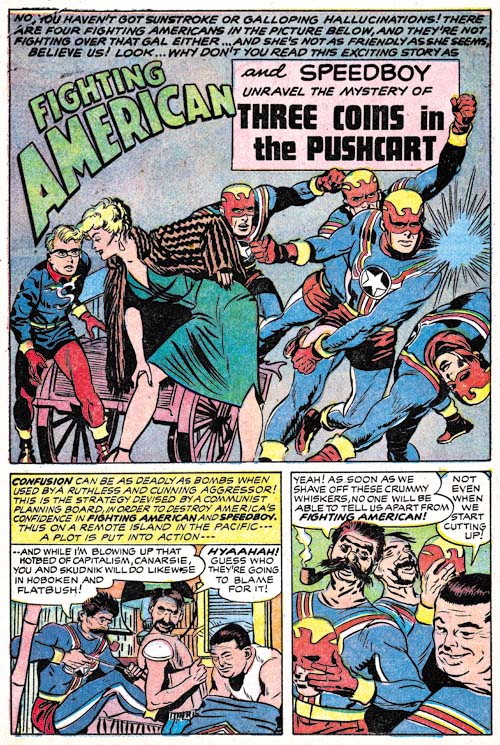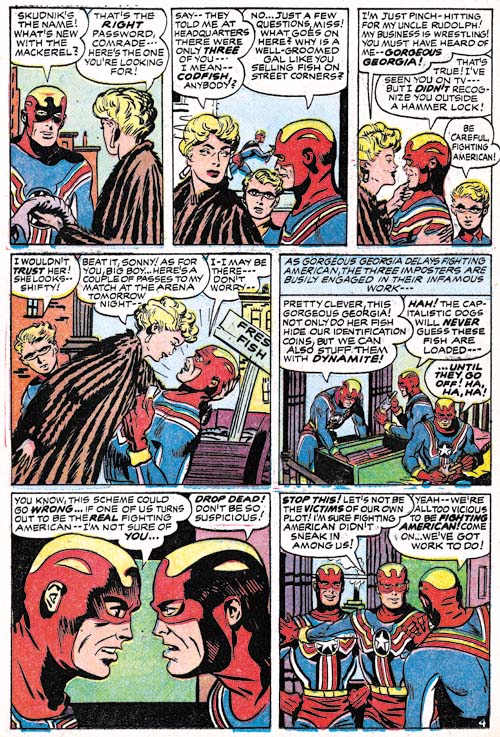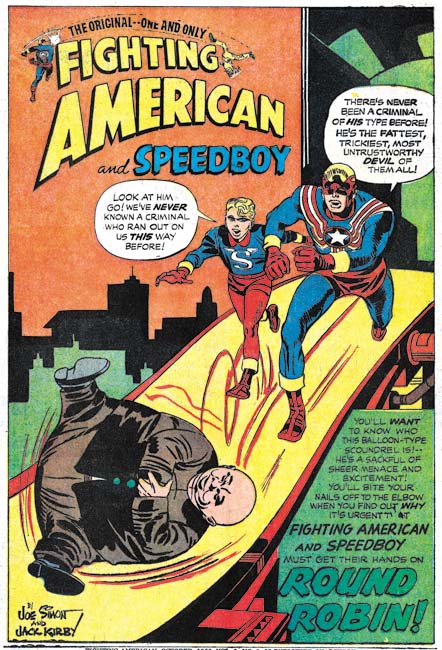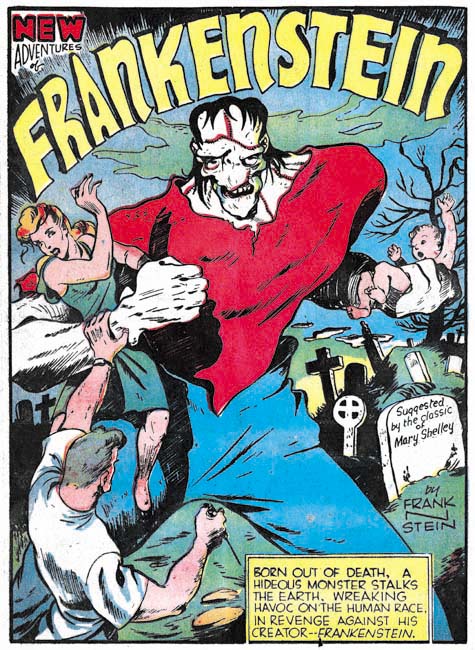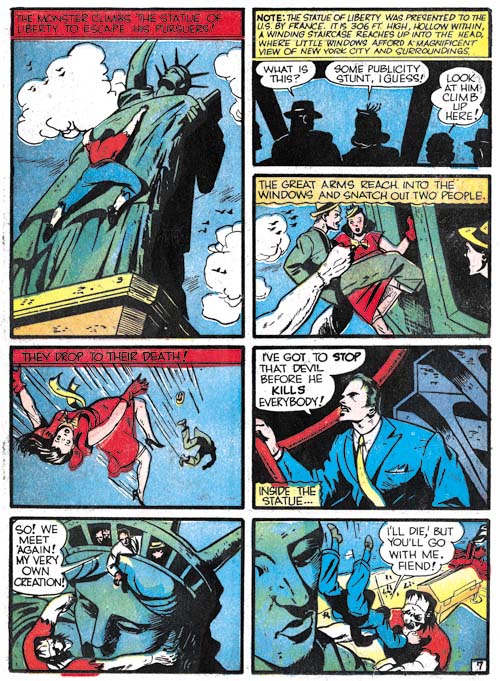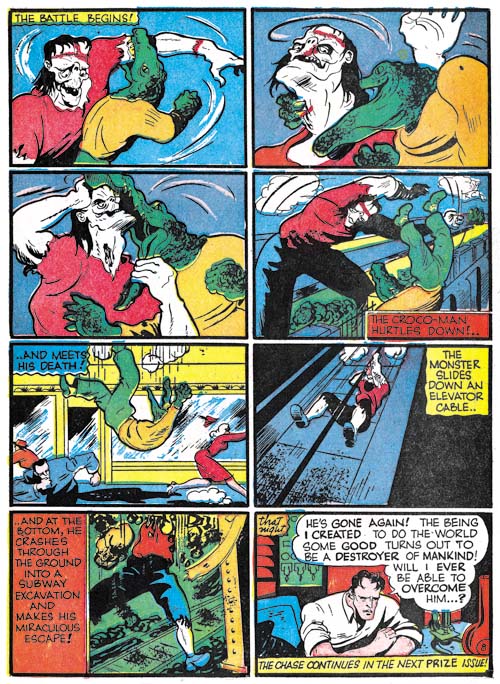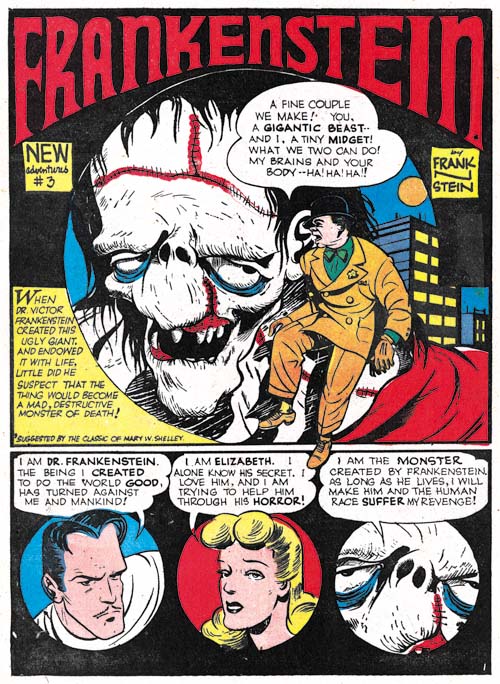(February 1952 – April 1952: Young Romance #42 – #44, Young Love #30 – #32)

Number of Romance Titles 1947 – 1953 (the period covered in this chapter is shaded in blue)
There has not been much change in what the Simon and Kirby studio was producing which were two monthly romance titles and one bimonthly horror all for Prize Comics. I believe all three titles were doing well but I will leave off explaining what is behind my belief until Chapter 20 of The Art of Romance and Chapter 4 of The Little Shop of Horrors.
Mort Meskin provided an astonishing 105 pages of art for the period covered in this chapter. This was much more then what Kirby drew (37 pages). To provide perspective Kirby only drew one more page then Bill Draut (36 pages) an artists not known for his speed. At this point Meskin has been the primary romance artist for about a year. You have to go back 3 years to find a period when Kirby produced more pages then Meskin did in these three months. The pool of other studio artists used during this period is rather small; John Prentice (27 pages), George Roussos (13 pages) and an unidentified artist (6 pages).
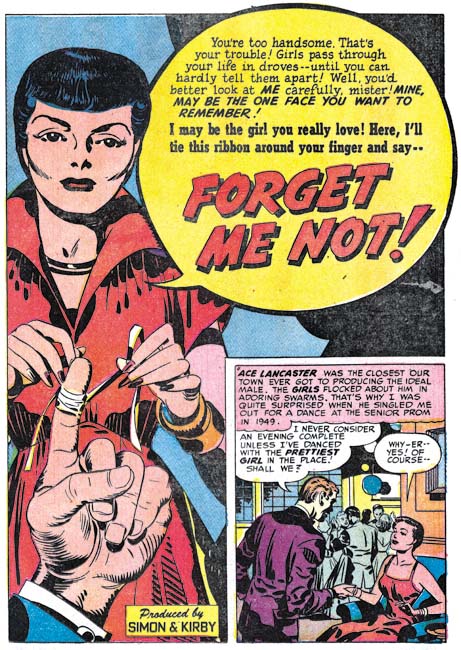
Young Romance #44 (April 1952) “Forget Me Not”, art by Jack Kirby
Kirby was the artists for the lead story for YR #42, #43 and #44 as well as YL #31. He continues to use the confessional splash where someone introduces the story to the reader and their speech balloon is also the title. The splash for “Forget Me Not” is perhaps the best of the Kirby splashes for this chapter.
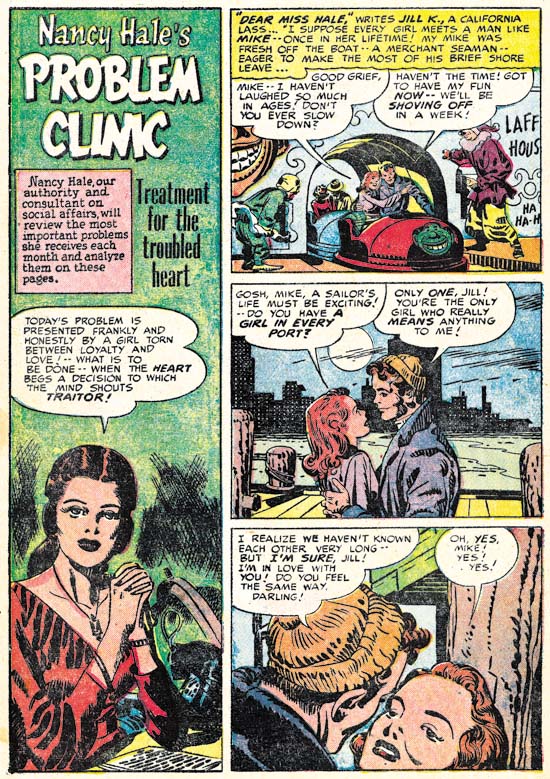
Young Love #30 (February 1952) “Problem Clinic”, art by Jack Kirby and George Roussos
Kirby has been known to provide a splash page for a story otherwise drawn by another artist. But it is unusual to find another artist doing the splash for a Kirby story. I find it particularly surprising that the artist would be George Roussos. The “Problem Clinic” is a standard Nancy Hale feature but this particular one is different from the others. The large vertical splash is not found in other Nancy Hale and is also not a typical splash format for Kirby. Normally “Problem Clinic” starts with Nancy Hale introducing the story, but not in this case. All this makes me suspect that the story was not originally meant to be a Nancy Hale “Problem Clinic” but was re-edited to become one.
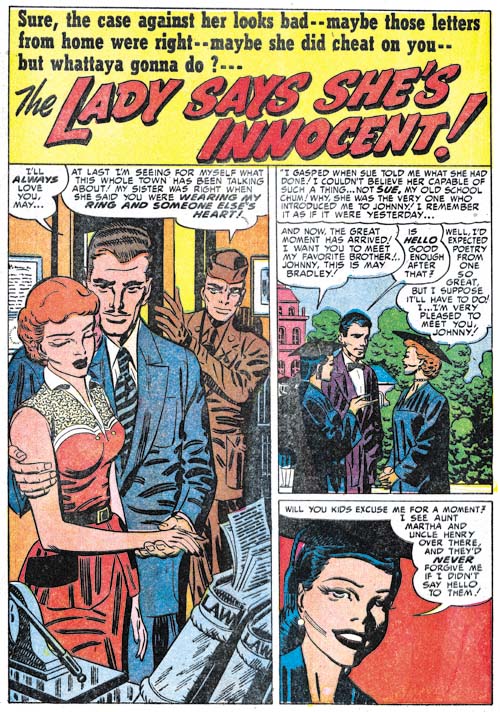
Young Romance #44 (April 1952) “The Lady Says She’s Innocent”, art by Mort Meskin
While I commonly find phrases in romance stories drawn by Jack Kirby that suggest that he was at least modifying the scripts I normally do not find such phrases in the work of other studio artists. This not to say that Jack did not contribute to the writing of stories for other artists, some writers have reported that Kirby would help provide the writers with plots. But Jack did not seem to re-write the scripts the writers returned unless he was going to draw the story. However the splash for “The Lady Says She’s Innocent” might be an exception. The last line of the soldier “you were wearing my ring and someone else’s heart” sounds so like Kirby to me. Even the whole concept of a person entering the room to verbally disrupt the proceedings is one typically found in Jack’s art. Unusually Kirby did not alter Mort Meskin’s art as he sometimes did with other artists. However I suspect that is what happened here. The composition suggests that there always was a figure on the right side of the splash. Perhaps Kirby was not happy with it, removed the old figure and added a layout and text for the balloon. With other artists Kirby would just have proceeded to draw and ink the figure but since Meskin worked in the studio Jack just left it to Mort to finish it up.
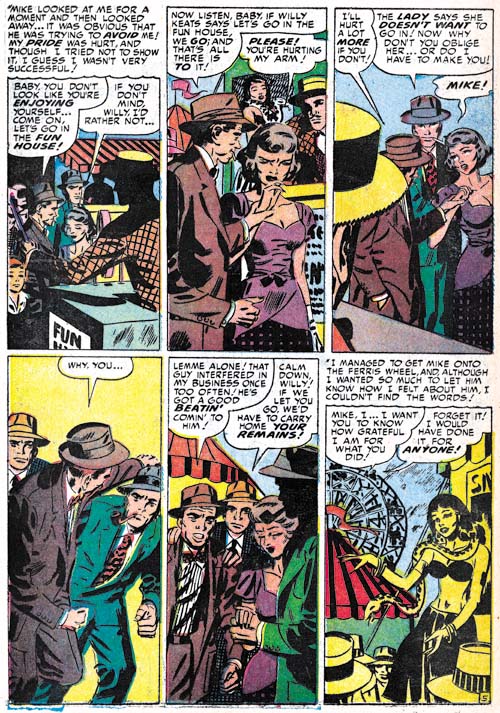
Young Romance #43 (March 1952) “Gentlemen Prefer Ladies” page 5, art by Mort Meskin
As I have previously mentioned, Meskin has seemed to pick up the use of tall narrow panels for some pages in a story. I find the above page from “Gentlemen Prefer Ladies” particularly effective both in how well Mort uses the narrow panels and for the cinematic approach to presenting the story. Mort likes to provide the man of his stories with a pipe as a suggestion of their sophistication. I love how this pipe is prominently displayed even in fight scenes.
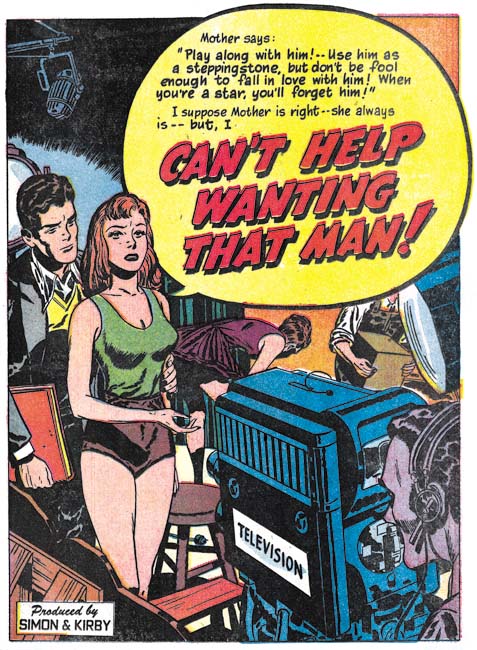
Young Love #32 (April 1952) “Can’t Help Wanting That Man”, art by Bill Draut
Despite the fact that Meskin was providing more pages of art then anyone else, it was Bill Draut that was used for those lead stories not done by Kirby during this period. Draut was not as good an artist as Kirby (who was?) but he still did an excellent job on the confessional splashes. The one for “Can’t Help Wanting That Man” provides a complete story. The struggling starlet torn between ambition and desire is venting her dilemma on a busy television studio while here love interests looks on. It is everything a splash should be, particularly for the all important first story of the comic.
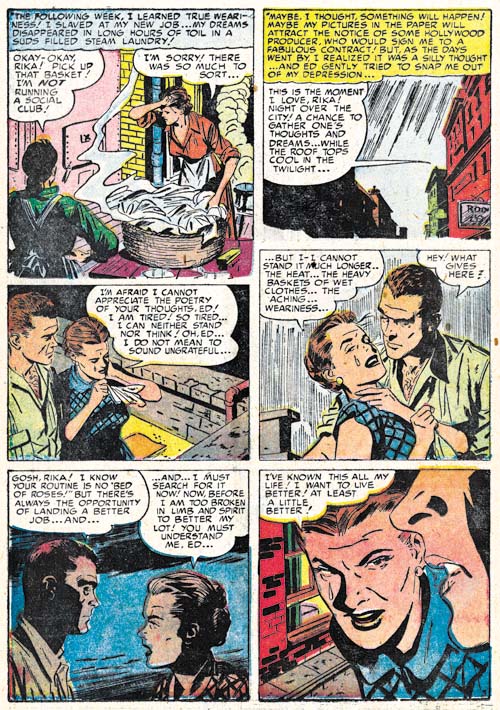
Young Love #30 (February 1952) “Learn to Love” page 5, art by John Prentice
John Prentice had his own way of graphically telling a story and I provide an example above. The way he works up to the dramatic close-up in the last panel is quite good. I do have some qualms about panel 4. The simple hatching used for the sky unfortunately inappropriately suggests rain. It is not Prentice’s fault but the handkerchief that the lady holds has suddenly become the same color as the man’s shirt making it all a bit more confusing then it really would have been. Note the way the brickwork is handled in the last panel. The use of scattered groups of black bricks done in rough brushwork is often seen in Bill Draut’s work.
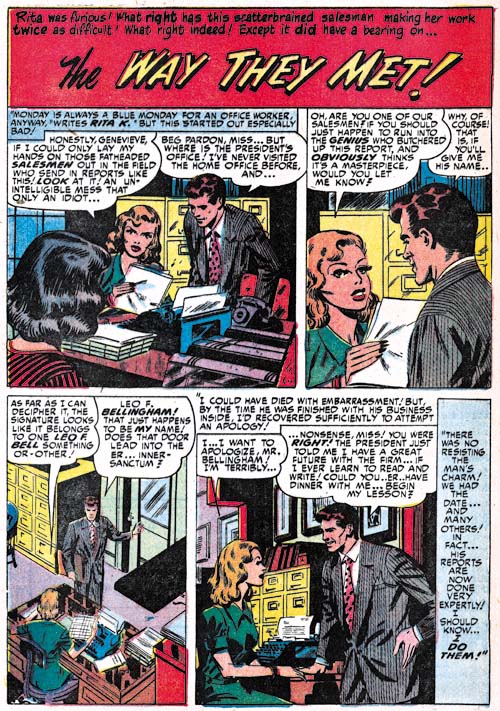
Young Romance #43 (March 1952) “The Way They Met”, art by George Roussos
George Roussos drew 6 features during this period and except for one they were all 1 or 2 page long. It is easy to see why; Roussos really was not that great of a romance artist, at least at this time.
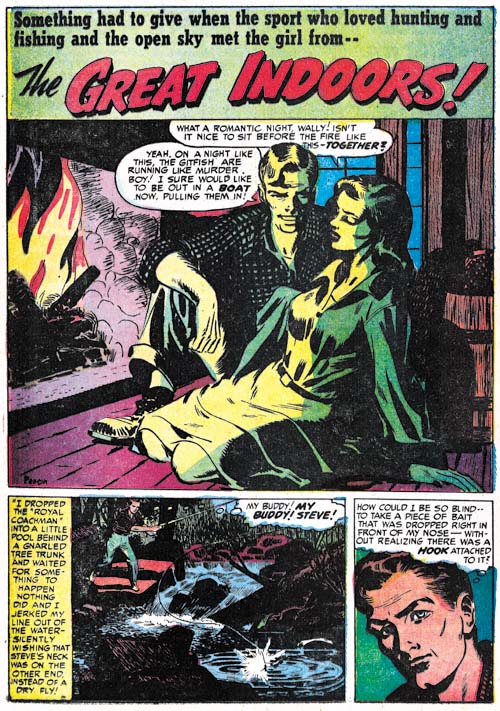
Young Love #31 (March 1952) “The Great Indoors”, art by Mort Meskin and George Roussos
Like most of the comic book industry at that time, Simon and Kirby did not normally provide credits for the artists that worked for on their productions. However they always allowed, perhaps even encouraged, artists to sign their work. So I always pay attention to the signatures because they provide the means to learn how to identify the various artists. The signature for “The Great Indoors” is a bit hard to make out but I thought it might have said Persius. It was the only story by Persius in my database and I could never uncover any further information or work by that artist. That is how it stood for a long time but my work for The Art of Romance has really tuned me in to the style used by George Roussos and when I saw the last panel of the splash page I immediately recognized it as his work. There are some parts, such as the man in the splash panel, that look like Mort Meskin’s style but initially I just attributed that to the large influence Meskin had on Roussos. When I closely looked at the signature again, I thought it actually read Roussos. Hey what can I say? Both the signature and the printing were poor.
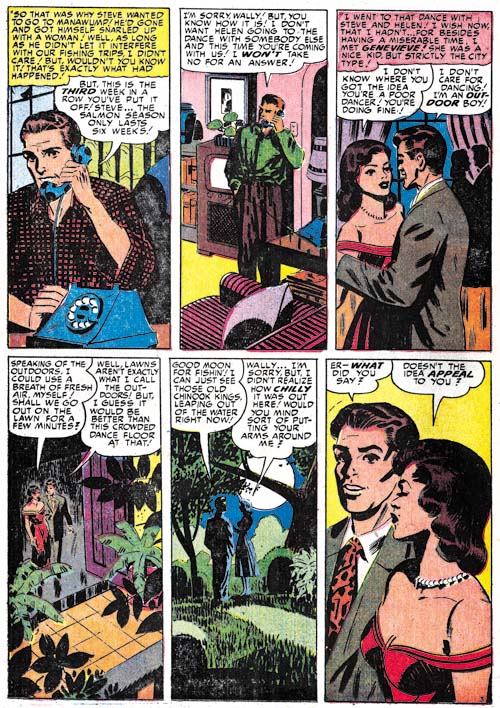
Young Love #31 (March 1952) “The Great Indoors” page 3, art by Mort Meskin and George Roussos
Going through the story I came across page 3 and saw the tall narrow panels. This is not a panel layout that I have seen Roussos use but it is one that Mort Meskin often turned to (see above). Then it all made sense. “The Great Indoors” was laid out by Meskin and finished and inked by Roussos. I have seen Jack Kirby do this with some less talented artists but this is the first example I have found of Meskin doing it. Roussos was one of Meskin’s inkers for work done previously at DC. I often find him listed as the inker for Meskin’s S&K work as well but I have not seen any evidence of that. Further Joe Simon has told me that Meskin inked his own work. “The Great Indoors” gives an indication of what Roussos inking Meskin have looked like at this time.
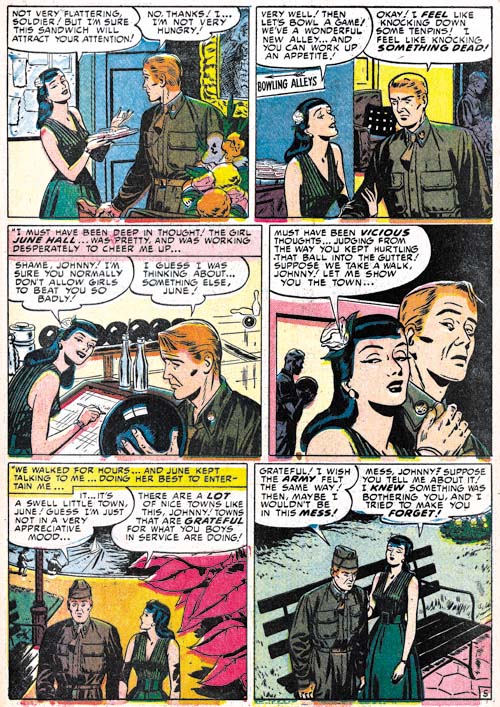
Young Love #32 (April 1952) “Three Day Pass” page 3, art by unidentified artist
There is one artist I have not been able to identify but he only did a single piece, “Three Day Pass”. I find some resemblance to the work by Al Eadeh (Art of Romance, Chapters 5 and Chapter 7). Eadeh worked for Simon and Kirby back in 1949 and if “Three Day Pass” is by Al then his work has evolved a bit. Unfortunately I have no interim Eadeh pieces to compare it with, so for now I am just leaving it as unidentified.
Chapter 1, A New Genre (YR #1 – #4)
Chapter 2, Early Artists (YR #1 – #4)
Chapter 3, The Field No Longer Their’s Alone (YR #5 – #8)
Chapter 4, An Explosion of Romance (YR #9 – #12, YL #1 – #4)
Chapter 5, New Talent (YR #9 – 12, YL #1 – #4)
Chapter 6, Love on the Range (RWR #1 – #7, WL #1 – #6)
Chapter 7, More Love on the Range (RWR #1 – #7, WL #1 – #6)
Chapter 8, Kirby on the Range? (RWR #1 – #7, WL #1 – #6)
Chapter 9, More Romance (YR #13 – #16, YL #5 – #6)
Chapter 10, The Peak of the Love Glut (YR #17 – #20, YL #7 – #8)
Chapter 11, After the Glut (YR #21 – #23, YL #9 – #10)
Chapter 12, A Smaller Studio (YR #24 – #26, YL #12 – #14)
Chapter 13, Romance Bottoms Out (YR #27 – #29, YL #15 – #17)
Chapter 14, The Third Suspect (YR #30 – #32, YL #18 – #20)
Chapter 15, The Action of Romance (YR #33 – #35, YL #21 – #23)
Chapter 16, Someone Old and Someone New (YR #36 – #38, YL #24 – #26)
Chapter 17, The Assistant (YR #39 – #41, YL #27 – #29)
Chapter 18, Meskin Takes Over (YR #42 – #44, YL #30 – #32)
Chapter 19, More Artists (YR #45 – #47, YL #33 – #35)
Chapter 20, Romance Still Matters (YR #48 – #50, YL #36 – #38, YB #1)
Chapter 21, Roussos Messes Up (YR #51 – #53, YL #39 – #41, YB #2 – 3)
Chapter 22, He’s the Man (YR #54 – #56, YL #42 – #44, YB #4)
Chapter 23, New Ways of Doing Things (YR #57 – #59, YL #45 – #47, YB #5 – #6)
Chapter 24, A New Artist (YR #60 – #62, YL #48 – #50, YB #7 – #8)
Chapter 25, More New Faces (YR #63 – #65, YLe #51 – #53, YB #9 – #11)
Chapter 26, Goodbye Jack (YR #66 – #68, YL #54 – #56, YB #12 – #14)
Chapter 27, The Return of Mort (YR #69 – #71, YL #57 – #59, YB #15 – #17)
Chapter 28, A Glut of Artists (YR #72 – #74, YL #60 – #62, YB #18 & #19, IL #1 & #2)
Chapter 29, Trouble Begins (YR #75 – #77, YL #63 – #65, YB #20 – #22, IL #3 – #5)
Chapter 30, Transition (YR #78 – #80, YL #66 – #68, YBs #23 – #25, IL #6, ILY #7)
Chapter 30, Appendix (YB #23)
Chapter 31, Kirby, Kirby and More Kirby (YR #81 – #82, YL #69 – #70, YB #26 – #27)
Chapter 32, The Kirby Beat Goes On (YR #83 – #84, YL #71 – #72, YB #28 – #29)
Chapter 33, End of an Era (YR #85 – #87, YL #73, YB #30, AFL #1)
Chapter 34, A New Prize Title (YR #88 – #91, AFL #2 – #5, PL #1 – #2)
Chapter 35, Settling In ( YR #92 – #94, AFL #6 – #8, PL #3 – #5)
Appendix, J.O. Is Joe Orlando
Chapter 36, More Kirby (YR #95 – #97, AFL #9 – #11, PL #6 – #8)
Chapter 37, Some Surprises (YR #98 – #100, AFL #12 – #14, PL #9 – #11)
Chapter 38, All Things Must End (YR #101 – #103, AFL #15 – #17, PL #12 – #14)
